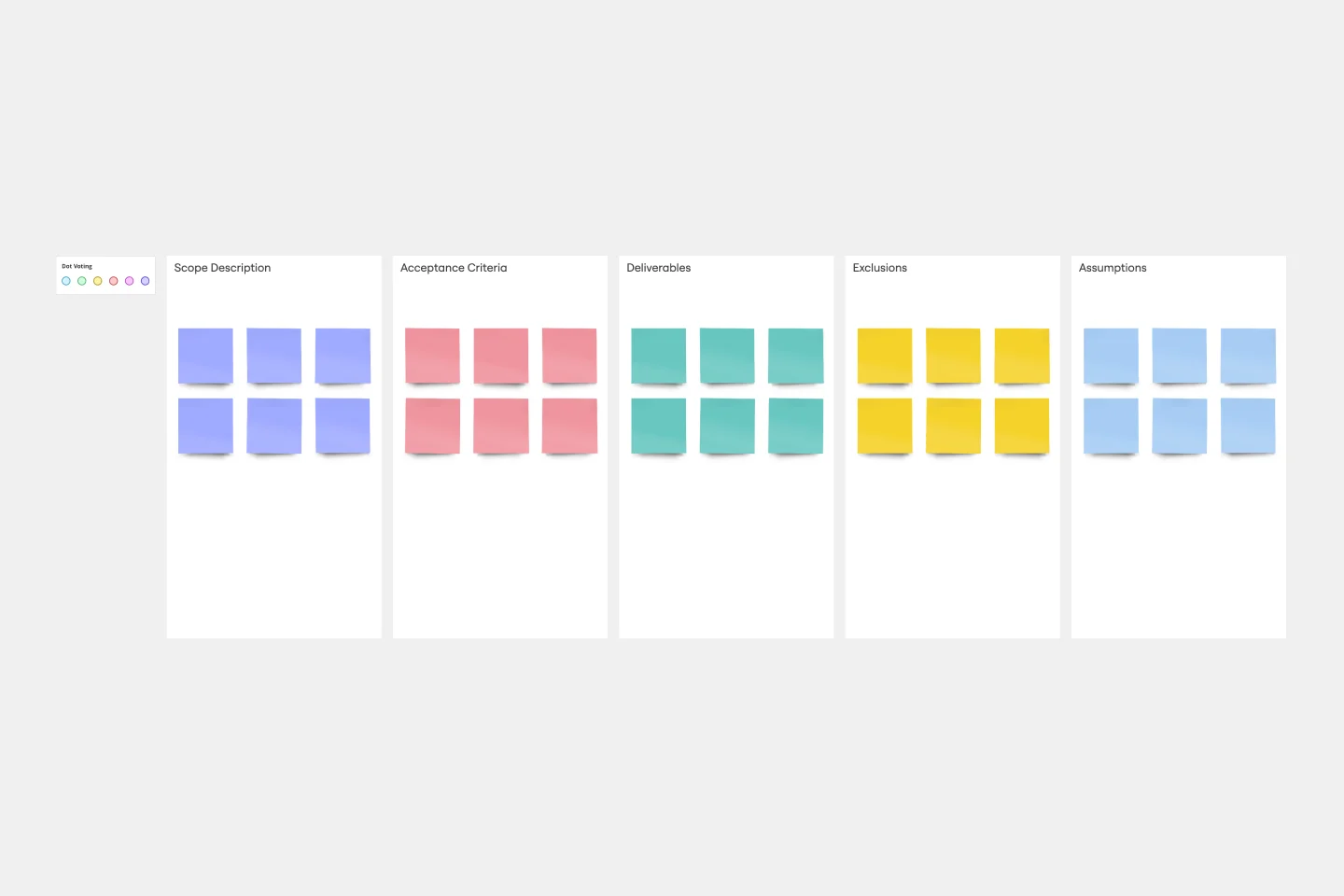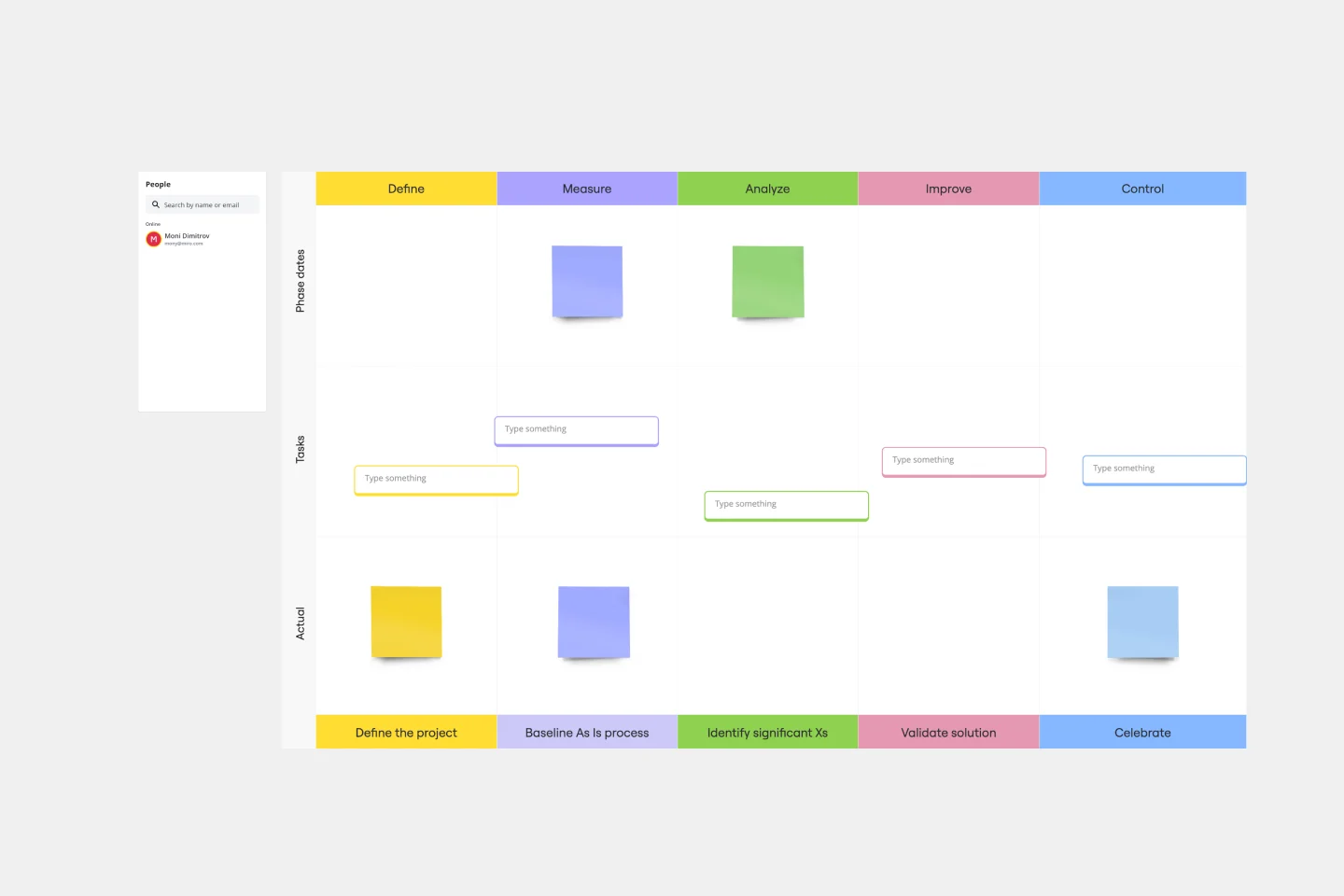About the Project Proposal template
What is a project proposal?
A project proposal outlines what you want to accomplish, your goals, and how you plan to achieve them. Generally, a project proposal gives the reader some context on the project, explains why it is important, and lists the actions that you will take to complete it.
Project proposals have myriad uses. Often, businesses use project proposals to get external buy-in from a donor or outside stakeholder. But many companies draw up project proposals for internal buy-in too.
What should I include in a project proposal?
A project proposal needs to be holistic in order to be effective. Not only is it important to include what you will be doing, designing, or executing on, but it is also important to show why a project is important. This means including background information on a project, the implications of the project, and what has already been done. A proposal should answer what the project is, why it matters, how the project will get done, and who would be involved.
What is the purpose of a project proposal?
Project proposals are vital. They are the scaffolding of any professional endeavor. Before investing resources in a project, a project proposal can be effective in assessing the value of a potential project. This type of document is especially helpful in communicating ideas to clients and outside stakeholders that need to better understand the concept and scope of a project.
How to create a project proposal:
Step 1: Write an executive summary.
An executive summary is like an abstract before a paper. Use the executive summary to explain the project -- but also to get buy-in. Think of it as an elevator pitch. Tell your reader why you’re undertaking this project, what you’re doing to succeed, and what success will look like.
Step 2: Contextualize the project.
Give your reader a brief history. Tell them about similar projects you’ve undertaken. If you’ve never undertaken this kind of project before, tell them why now is the time to do so. Show the reader how you’ve learned from prior projects to optimize for success on this one.
Step 3: Outline your needs.
Remember, the goal of a project proposal is to get buy-in. Tell your reader what you need to be successful. That could include resources, money, materials, and personnel.
Step 4: Showcase the problem you’re solving.
Start by telling the reader exactly what problem you aim to solve. Explain why you think it’s important to solve that particular problem. Frame the problem as an opportunity. It’s not just a hurdle -- it’s a potential market. Then make a case for your business. To win over your reader, persuade them that your project is uniquely suited to solving this problem. Highlight any project management techniques, skillsets, and resources your company is bringing to the table. Don’t be modest!
Step 5: Create a budget and timeline.
Sketch out an estimate of how long this project should take. Include some milestones that, once achieved, will let you know that the project is on track. And let your reader know how much it will cost to undertake this project. Be sure to explain how and why you plan to spend that money.
Step 6: Define the decision-makers.
Clarify the internal stakeholders who will be managing the project. That way, the reader will know who to contact if they want to partner with your business or learn more. You can also clarify external stakeholders who must sign off on the project.
Step 7: Lay out a communication plan.
When you finish the project, how do you plan to tell the world? Tell your reader how your audience will be impacted by your project and how you plan to communicate that impact. If you have a marketing team, collaborate with them on this section. They should include any documentation, press releases, emails, ads, and social media campaigns they plan to run when the project is finished.
Step 8: Add any additional information.
Many people include an appendix that does a deep-dive into the information from the proposal. You can use the appendix for technical documentation or statistics that would bug down the proposal itself, but that might interest your reader.
Discover more project charter examples to simplify your planning.

Miro
Your virtual workspace for innovation
Miro is an innovation workspace designed for teams of every size, everywhere, to dream, design, and build the future together. Our mission? To empower these teams to create the next big thing, powered by AI at every step of the way. Over 90 million users around the world rely on Miro to untangle complex ideas, put customer needs first, and deliver products and services faster. All supported by best-in-class security, compliance, and scalability.
Categories
Similar templates
Project Scope Template

Project Scope Template
A project scope helps you plan and confirm your project’s goals, deliverables, features, functions, tasks, costs, and deadlines. A project manager and team should develop a project scope as early as possible, as it will directly influence both the schedule and cost of a project as it progresses. Though project scopes will vary depending on your team and objectives, they generally include goals, requirements, major deliverables, assumptions, and constraints. Aim to include the whole team when you create a project scope to ensure everyone is aligned on responsibilities and deadlines.
Project Status Report Template

Project Status Report Template
When a project is in motion, the project manager must keep clients and shareholders updated on the project’s progress. Rather than waste time with constant meetings, leaders can send out weekly or daily project status reports to keep everyone informed. You can use the Project Status Report Template to streamline the report creation and distribution process.
Cross Functional Flowchart

Cross Functional Flowchart
Have a quick look at everyone on a project and see exactly what they’ll contribute. That’s the clarity and transparency a cross-functional flowchart will give you. These are also called “swim lane” flowcharts because each person (each customer, client, or representative from a specific function) is assigned a lane—a clear line—that will help you visualize their roles at each stage of the project. This template will empower you to streamline processes, reduce inefficiencies, and make meaningful cross-functional relationships.
Work Plan Template

Work Plan Template
A work plan is essentially a roadmap for a project. It articulates the steps you must take to achieve the desired goal, sets demonstrable objectives, and establishes measurable deliverables. An effective work plan guides you throughout the project lifecycle, allowing you to realize an outcome by collaborating with your team. Although work plans vary, they generally contain four core components: goals, strategy, tactics, and deliverables.
Project Scope Template

Project Scope Template
A project scope helps you plan and confirm your project’s goals, deliverables, features, functions, tasks, costs, and deadlines. A project manager and team should develop a project scope as early as possible, as it will directly influence both the schedule and cost of a project as it progresses. Though project scopes will vary depending on your team and objectives, they generally include goals, requirements, major deliverables, assumptions, and constraints. Aim to include the whole team when you create a project scope to ensure everyone is aligned on responsibilities and deadlines.
Project Status Report Template

Project Status Report Template
When a project is in motion, the project manager must keep clients and shareholders updated on the project’s progress. Rather than waste time with constant meetings, leaders can send out weekly or daily project status reports to keep everyone informed. You can use the Project Status Report Template to streamline the report creation and distribution process.
Cross Functional Flowchart

Cross Functional Flowchart
Have a quick look at everyone on a project and see exactly what they’ll contribute. That’s the clarity and transparency a cross-functional flowchart will give you. These are also called “swim lane” flowcharts because each person (each customer, client, or representative from a specific function) is assigned a lane—a clear line—that will help you visualize their roles at each stage of the project. This template will empower you to streamline processes, reduce inefficiencies, and make meaningful cross-functional relationships.
Work Plan Template

Work Plan Template
A work plan is essentially a roadmap for a project. It articulates the steps you must take to achieve the desired goal, sets demonstrable objectives, and establishes measurable deliverables. An effective work plan guides you throughout the project lifecycle, allowing you to realize an outcome by collaborating with your team. Although work plans vary, they generally contain four core components: goals, strategy, tactics, and deliverables.